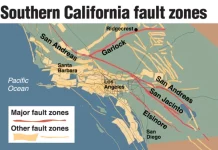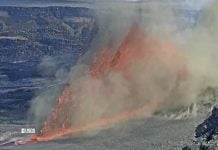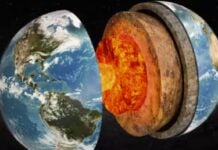
Traces of a Lost World Deep Within Planet Earth
Hidden deep beneath our feet, chemical fingerprints of Earth’s earliest incarnation appear to have persisted — untouched since before the world we know was born. In a new study, researchers report a unique imbalance in potassium isotopes preserved in ancient mantle-derived rocks. The signal suggests that the original building blocks of Earth remain sequestered in the planet’s interior, offering a direct glimpse of our planet’s primordial origins.
The discovery
Scientists from MIT and collaborating institutions identified a subtle deficit in potassium-40 relative to potassium-39 and potassium-41 in select ancient samples — a pattern not typical of most modern Earth materials. Because potassium isotopes track early solar system chemistry, the K-isotope “fingerprint” indicates pre-impact material may have survived Earth’s violent youth.
“This is maybe the first direct evidence that we’ve preserved the proto-Earth materials… We see a piece of the very ancient Earth, even before the giant impact.” — Nicole X. Nie, MIT
Why potassium isotopes matter
Potassium occurs as three stable/radiogenic isotopes: K-39, K-40 (radioactive, rare), and K-41. Previous work on meteorites showed that different early solar system reservoirs have distinct K-isotope ratios. The new study shows that some Earth rocks share a non-modern signature, implying the presence of ancient, unmixed mantle domains that predate the Moon-forming giant impact.
How they found it
- Samples: Rock powders from the oldest terrains in Greenland and Canada, plus Hawaiian lavas that tap deep mantle sources.
- Method: High-precision mass spectrometry on carefully purified potassium fractions.
- Result: A detectable deficit of K-40 relative to common terrestrial values — a tiny shift, but geochemically meaningful.
- Testing alternatives: The team modeled giant impacts, later meteorite additions, and mantle mixing through time. Simulations trend toward modern Earth’s composition, not the observed deficit — reinforcing that the measured signature likely reflects surviving proto-Earth material.
What it means for Earth’s origin
If Earth retained pre-impact mantle pockets, then Earth’s interior is more chemically diverse and less homogenized than long assumed. The finding implies:
- Early reservoirs persist: Some primordial domains resisted the global mixing expected from the Moon-forming impact.
- Incomplete meteorite record: The proto-Earth’s exact building blocks may not be represented by known meteorites — the closest matches still differ.
- New tracers for deep time: Potassium isotopes join W, Nd, Xe, and others as tools to map hidden mantle structures and early solar system processes.
Paper & reference
Da Wang, Nicole X. Nie, Bradley J. Peters, James M. D. Day, Steven B. Shirey, Richard W. Carlson (2025). Potassium-40 isotopic evidence for an extant pre-giant-impact component of Earth’s mantle. Nature Geoscience. DOI: 10.1038/s41561-025-01811-3.
Related on Strange Sounds
💌 If this helped you, support Strange Sounds: PayPal · Donorbox
📰 Subcribe to the Strange Sounds Newsletter! You will love it!
👉 Follow & share: Facebook · Twitter/X
Got hum? Report what you hear in the comments or contact us. And don’t forget to share this story to help map the Kerry County Hum.
FAQs
What did the MIT study actually find?
A tiny but significant potassium-40 deficit in certain ancient and deep-sourced rocks, implying a surviving proto-Earth mantle component.
Why is potassium-40 important here?
K-40 is rare and sensitive to early solar system processes. Its ratio relative to K-39 and K-41 can reveal ancient reservoirs otherwise erased by planetary mixing.
Where were the rocks from?
Greenland and Canada (old crustal provinces) and Hawaii (deep-mantle plume lavas).
How does this affect Moon-formation theories?
It suggests the Moon-forming giant impact did not completely homogenize Earth’s interior; primordial pockets may still exist.
Do meteorites match the proto-Earth signature?
No exact match yet. The result hints that the meteorite inventory is incomplete for Earth’s specific building blocks.













Everyone, especially anyone at MIT, knows that there was no “moon-forming”. The moon was cleary not formed from anything off the earth.